
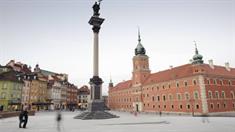
Varsovia es una ciudad llena de historia y cultura, con muchos lugares interesantes para visitar. A [...]
Capital de Polonia con una ciudad vieja reconstruida, museos y sitios de la realeza como el palacio [...]

Cracovia es una ciudad llena de historia y cultura que ofrece una gran variedad de lugares interesan[...]
Ciudad polaca famosa por la basílica gótica de Santa María, el castillo de Wawel y el memorial de Au[...]
/FOTOCIUPRIN2019092623429612WroclawBreslavia.jpg)
Breslavia es una ciudad ubicada en el río Óder, en el oeste de Polonia. Es conocida por su Plaza del[...]
Ciudad del oeste de Polonia con el Centro del Centenario, el Panorama de Racławice y la Plaza del Me[...]
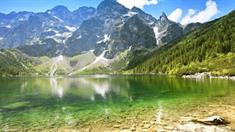
Los montes Tatras son parte de la cadena montañosa de los Cárpatos en Europa Oriental y crean una fr[...]
Montañas eslovacas y polacas con las cimas Gerlach, Kriváň y Rysy, esquí, excursiones y ciclismo de [...]

El Bosque de Białowieża es una reserva natural enclavada en uno de los últimos bosques vírgenes de E[...]
Bison bonasus, parque, bosque y bisonTe recomendamos viajar entre el 18–25 nov. para obtener un buen[...]
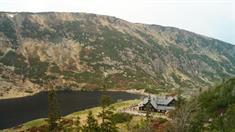
Las Montañas de los Gigantes, también Karkonosze, Krkonoše o Riesengebirge es una cordillera en los [...]
Montaña, esquí y deporte de inviernoTe recomendamos viajar entre el 3–10 nov. para obtener un buen p[...]
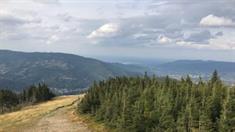
Los Beskides es el nombre tradicionalmente atribuido a una sucesión de macizos montañosos en el este[...]
Montaña, ursus arctos, esquí y bosqueTe recomendamos viajar entre el 16–23 nov. para obtener un buen[...]

Bison bonasus, ursus arctos y montañaTe recomendamos viajar entre el 21–28 nov. para obtener un buen[...]

Parque nacional amplio y montañoso con lagos, cuevas, vida silvestre y kilómetros de senderos panorá[...]
Parque nacional vasto, senderos y faunaTe recomendamos viajar entre el 16–23 nov. para obtener un bu[...]
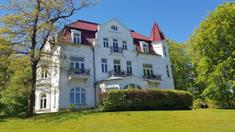
La isla Usedom es una isla costera del mar Báltico ubicada frente a la desembocadura del Oder, separ[...]
Isla alemano-polaca en el Báltico con el balneario de Ahlbeck, el Museo de Peenemünde y el faro Świn[...]
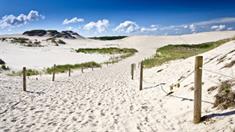
El Parque Nacional de Słowiński es un Parque Nacional en el voivodato de Pomerania, al norte de Polo[...]
Parque nacional polaco con grandes dunas de arena cambiantes, el lago salado Łebsko y la colina Rowo[...]
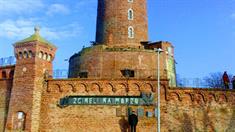
Kołobrzeg, es una ciudad de alrededor de cincuenta mil habitantes, ubicada en el voivodato de Pomer[...]
Ciudad costera polaca con la basílica de Santa María, el muelle de Kołobrzeg y el Museo de Armas de [...]
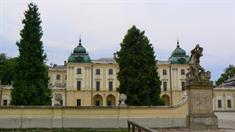
Bialystok es la principal ciudad y capital histórica del voivodato de Podlaquia, en Polonia. Con una[...]
Palacio, mercado, monumento y museoTe recomendamos viajar entre el 15–22 nov. para obtener un buen p[...]

Krynica-Zdrój es una ciudad polaca perteneciente al voivodato de Pequeña Polonia, a los pies de los [...]
Esquí, concierto y estación de esquíTe recomendamos viajar entre el 16–23 nov. para obtener un buen [...]
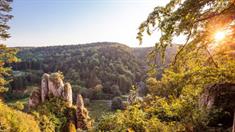
Reserva natural en una región montañosa con museo local, centro de visitantes y visitas a las cuevas[...]
Reserva natural con cuevas y montañasTe recomendamos viajar entre el 16–23 nov. para obtener un buen[...]

La Triciudad es un área urbana localizada en el norte de Polonia formada por tres ciudades principal[...]
ConciertoTe recomendamos viajar entre el 17–24 oct. para obtener un buen precio
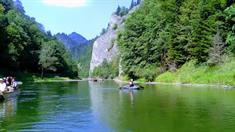
Parque nacional y cordillera con un río, senderos, ruinas de castillos y varios centros de informaci[...]
Parque nacional de Polonia donde se encuentran el rápido río Dunajec y las ruinas del castillo de Cz[...]
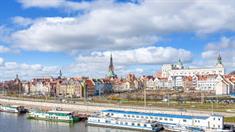
Szczecin es la capital del voivodato de Pomerania Occidental en Polonia. En español es tradicionalme[...]
Ciudad polaca con terraplén Chrobry del siglo XIX, catedral de Santiago Apóstol y ayuntamiento gótic[...]
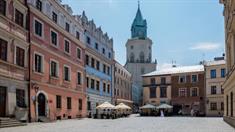
Lublin es una ciudad de Polonia, capital del voivodato homónimo. Está situada en las tierras altas d[...]
Museo al aire libre, historia y jardínTe recomendamos viajar entre el 18–25 nov. para obtener un bue[...]